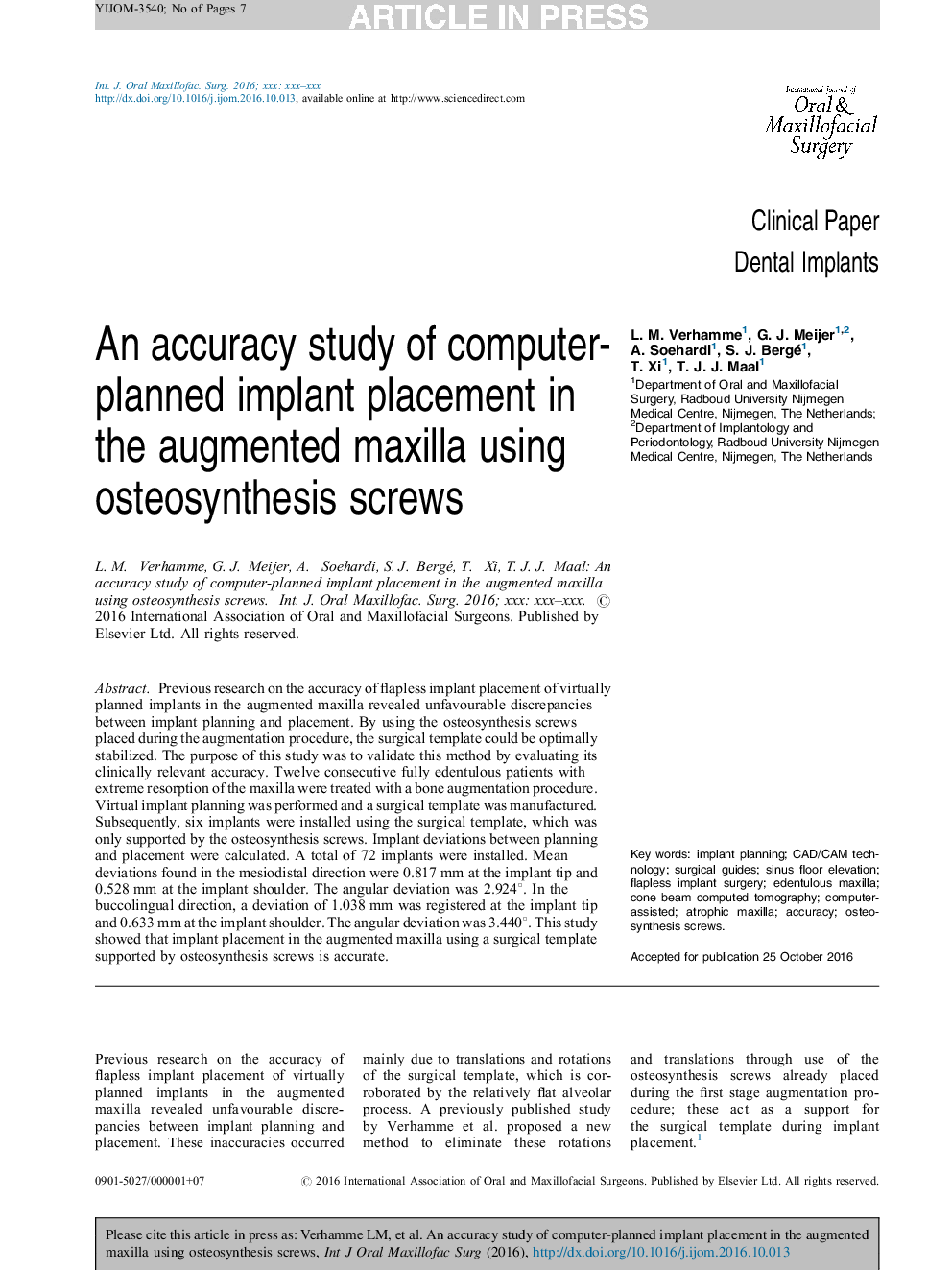| Article ID | Journal | Published Year | Pages | File Type |
|---|---|---|---|---|
| 5639263 | International Journal of Oral and Maxillofacial Surgery | 2017 | 7 Pages |
Abstract
Previous research on the accuracy of flapless implant placement of virtually planned implants in the augmented maxilla revealed unfavourable discrepancies between implant planning and placement. By using the osteosynthesis screws placed during the augmentation procedure, the surgical template could be optimally stabilized. The purpose of this study was to validate this method by evaluating its clinically relevant accuracy. Twelve consecutive fully edentulous patients with extreme resorption of the maxilla were treated with a bone augmentation procedure. Virtual implant planning was performed and a surgical template was manufactured. Subsequently, six implants were installed using the surgical template, which was only supported by the osteosynthesis screws. Implant deviations between planning and placement were calculated. A total of 72 implants were installed. Mean deviations found in the mesiodistal direction were 0.817 mm at the implant tip and 0.528 mm at the implant shoulder. The angular deviation was 2.924°. In the buccolingual direction, a deviation of 1.038 mm was registered at the implant tip and 0.633 mm at the implant shoulder. The angular deviation was 3.440°. This study showed that implant placement in the augmented maxilla using a surgical template supported by osteosynthesis screws is accurate.
Keywords
Related Topics
Health Sciences
Medicine and Dentistry
Dentistry, Oral Surgery and Medicine
Authors
L.M. Verhamme, G.J. Meijer, A. Soehardi, S.J. Bergé, T. Xi, T.J.J. Maal,
